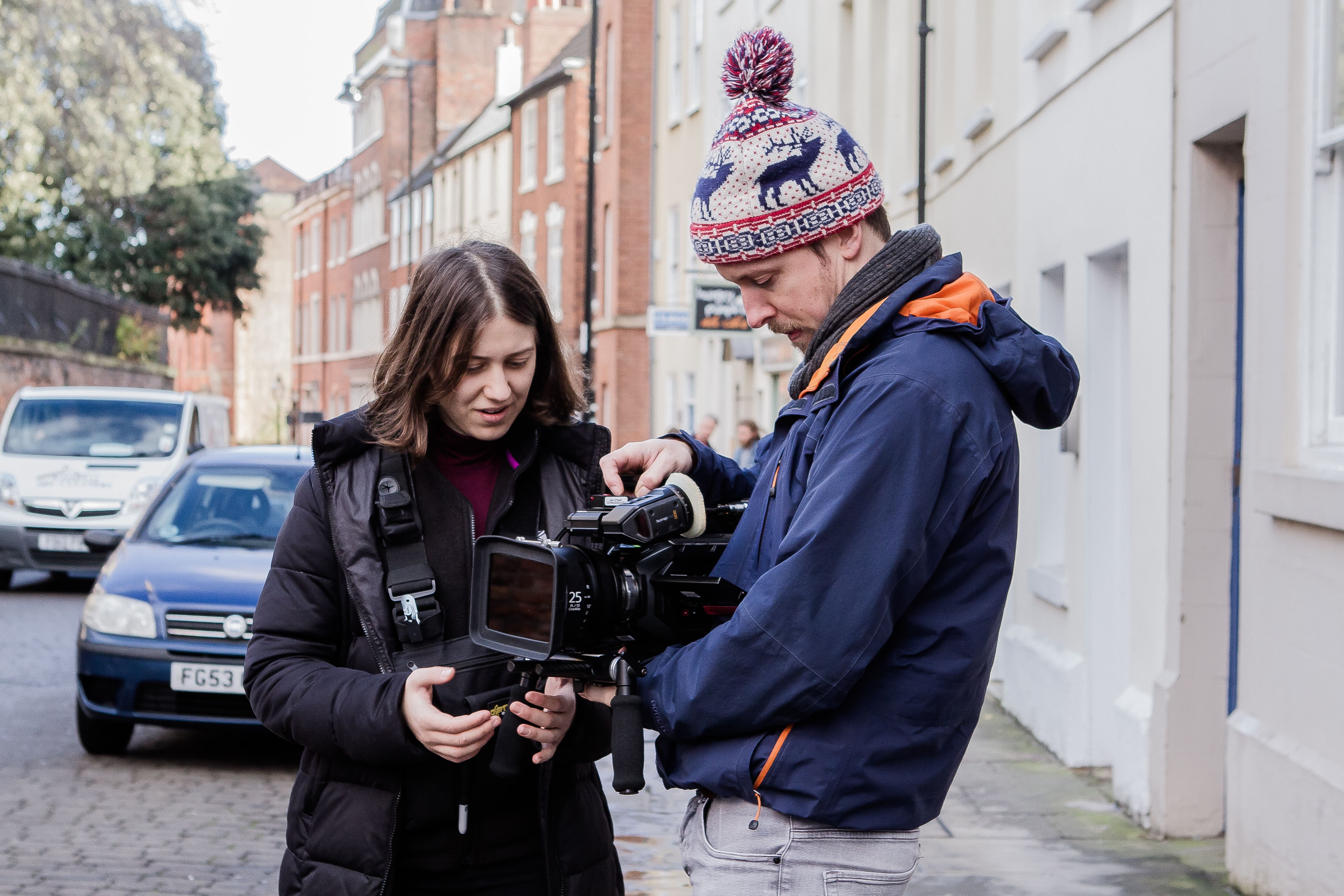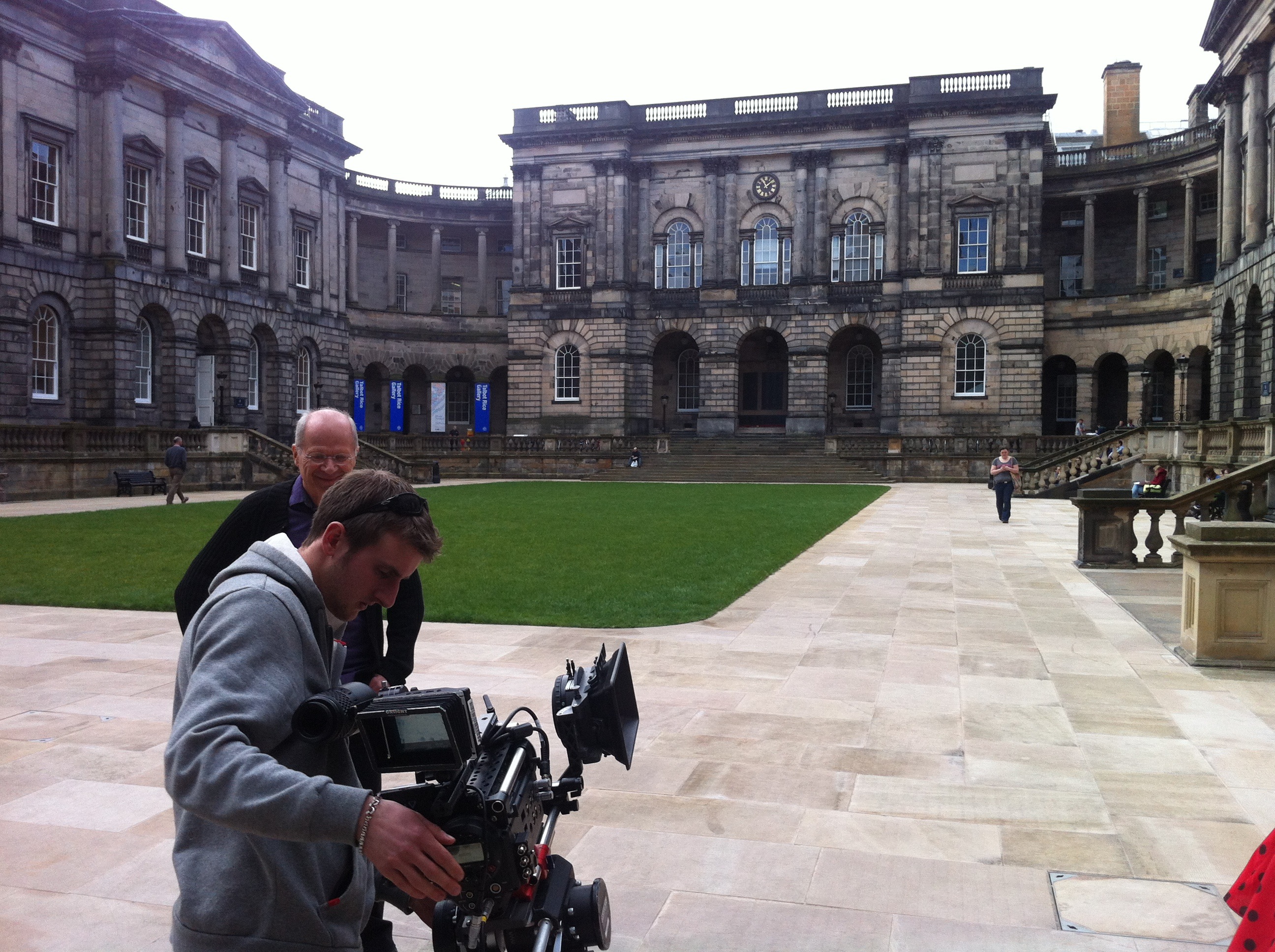On-Site Filming Best Practices for Professional Shoots
It takes more than a camera and creativity to make good videos. And that also means sophisticated logistics for location shoots. No matter whether you’re working on a corporate film, commercial, or brand video, successful on-location shooting depends on certain rules of conduct.
Shooting on location offers realism, but it also comes with specific requirements. From navigating the unpredictable lighting and sound of an outdoor live space to managing crewing and equipment, successful video production on-site requires careful preplanning, teamwork, and flexibility.
In this guide, we’re going to go over the best video production tips for filming on location, best practices for filming in different locations, and how to keep your workflow strong from setup to post-production.
Pre-Production Planning for On-Site Shoots
Once the camera is rolling on a shoot, there are many basic things one does not even need to think about. Planning is obviously essential, since you want every day on set to be a good one.
Effective planning includes the following:
- Scout Locations: Light and accessibility are among the qualifications for scouting a location. Remember, of course, that a great location can contribute to visual storytelling. Don’t forget that timeless classic —the code of practice for location filming. It will still give you hints about what’s allowed and what isn’t.
- Permissions and Permits: When the final location is chosen, start obtaining permits for shooting. Contact local authorities, property owners, or councils if you intend to film in public spaces or private commercial locations.
- Establish a Production Day Checklist: After you create a pre-production checklist, such as this one, nothing gets forgotten on the day of. This includes all your camera gear, microphones, lights, and additional batteries.
- Weather Planning: Plan for bad weather, even if no photos are taken outdoors. Check the forecasts and use a tent or cover to protect your gear while gearing up.
- Schedule and Shot List: Make sure there’s a shot list or agenda, and an AD mentor load list for the end-of-day schedules distributed, then check updates on this to be sure you’ll shoot for a few. Add the camera angles and light-blocking.
Good planning saves time and reduces stress, and it ensures better on-location shooting practices.

Essential Equipment for On-Site Filming
Quality and ease of use are the keys to in-the-field video production. All are relevant and contribute positively to achieving a more professional look and sound on the shoot.
Here’s a quick list of the gear you’ll want to have at the ready:
- Cameras & Lenses: Use good-quality cameras that can fulfill your shooting needs. Carry plenty of lenses to give yourself flexibility in both lighting and framing.
- Tripods and Gimbals: Sometimes in the field, you have to stabilize things. For fixed shots, tripods work great, while gimbals give you smooth, moving shots.
- Lighting Kits: Natural light can be inconsistent—use portable LED panels or reflectors for consistent, on-the-go power control.
- Microphones and Audio Gear: Crisp visuals can be ruined by poor audio. Purchase lapel or boom mics and an audio recorder. Go ahead and lose them while you're prepping and testing your location snaps.
- Backup of Power and Storage: Bring extra batteries, chargers, and memory cards. “Everything runs over time on location shooting, so you have to back up your power.
- Accessories and Safety Gear: You’re going to need extension cords, sandbags, tape, and cones so you don’t find yourself in an embarrassing situation on set. These are the kinds of details that matter when you’re piecing together a pro video shoot setup.
Following these best practices for field production can help ensure technical hiccups don’t stand in the way of creativity.
Setting Up the Location for a Smooth Shoot
When you get there, the best way to ensure good results is to prepare. The way you build the space affects lighting, sound, and camera movement.
Here's how to do it right:
- Check Out the Space: Observe the lighting, shadows, and the backdrop before unpacking. Consider window placements, overhead lights, power sources, sound sources, and traffic patterns. Find where the sun falls and think about how shadows travel.
- Set Up Equipment: Refer to your video shoot checklist to place gear in the best positions — cameras close to power, lights angled away from the ceiling to avoid light bulb reflections, and cables that won't trip people. Maintain a clean set: this speeds up transitions and reduces errors.
- Check the Sound: Before you even fill the room with your beautiful voice, do a quick check to hear for echoes or anything else that sounds off. If this room location is too "echoey," dampen reflections with carpets, foam panels, or blankets. Where there's road noise or HVAC, plan mic placement accordingly.
- Lighting: Don't rely solely on the sun to light your subject, and always use soft light for indoor shoots. Shoot outside during the golden hours, shoot in the shade, or manage direct sunlight with reflectors/diffusers. Keep your lighting under control to match the visual tone you want.
- Safety Precaution: Whenever you work on any vehicle, you must follow safety precautions. Keep pathways clear, label cables, place sandbags to secure the lights, and ensure your crew is aware of emergency exits. Responsible setups that factor in safety, project professionalism, and keep crew and gear safe.
An efficient setup encourages best-practice location shooting and minimizes downtime.

Coordinating Your Production Crew
A solid crew is everything for an on-location filming project. The effort is successful only if every member moves in the same direction. Here's how you can stay aligned with your team:
- Clarify Roles: Decide who is doing what — director, camera operator, sound person, lighting person, production assistant, and so on. It enhances clarity of communication and minimizes ambiguity.
- Pre-Shoot Meeting: Hold a brief meeting to review the day's plan, prepare the location setup, capture key shots, identify any obstacles you might encounter, and outline your shooting schedule. Ensure everyone knows where to go and what to do.
- Be Flexible: Occasionally, things do change. The lighting shifts, the noise spikes, the talent who's supposed to arrive doesn't show up on time. Be prepared to pivot your on-location filming plan. The best teams pivot smoothly.
- Tools of Communication: Walkies, headsets, or cell apps to stay in touch at big spots. It saves so much time and potential confusion when you've got to coordinate moves, lighting changes, or equipment shifts.
- Boost Morale: Promote breaks, show your gratitude, and keep energy high on set. And happy crews are productive crews. Good crew morale helps with productivity and innovation.
Proper teamwork makes your on-location video production roll out like an absolute dream come true.
Common Challenges During On-Site Filming and How to Avoid Them
Nothing is a sure bet when it comes to location in filmmaking, even with the best-laid plans. Knowing about these issues and how to avoid them helps you maintain operational efficiency.
- Inconsistent lighting: There's no consistency in natural light (clouds, sun position, weather). Employ reflectors or diffusers to keep things even, and consider when you might want to shoot (e.g., the golden hours).
- Unwanted background noise: Street sounds, wind, HVAC systems, or foot traffic can corrupt your sound. Just make sure always to use your external mics and wind filters. Try sampling the ambient sound during setup and adjust mic placement or shoot timing if necessary.
- Weather Interruptions: Rain, wind, and sunlight can disrupt your setup. Stick to weatherproof covers, tents, or Plan B. Outdoor productions in particular.
- Broken Equipment: A camera or light fails, a memory card becomes full, or batteries drain. Have backup gear with you and do quick checks before filming gets underway. You've got to have spares to save your production.
- Time Constraints: There's a lot of power and money at stake in delays. Be strict about keeping to your schedule, but factor in extra time for setup, tweaks, and unexpected pauses. Following a production-day list keeps everything on schedule.
- Permission: Never assume you can film wherever you want. Remember to take your permits with you and to adhere to the location filming code of practice. Whether you are closed or fined, momentum is lost.
By anticipating these challenges, your team can maintain best on-site filming practices for a smooth-sailing shoot.

Post-Filming Checklist and Review
The work doesn't end after shooting wraps. A good post-film checklist also means leaving the shoot organized and ready for editing later.
Here's what to include:
- Review the shot on location: Play it back before you leave to ensure the key shots are captured and in focus.
- Back Up Your Data: Back up your files to a different disk or the cloud. Never risk losing your footage.
- Safely Pack Up Equipment: Your video shoot checklist should ensure that no equipment is left behind. Mark all wires and secure fragile equipment with padding.
- Site Clean-Up: As always, leave the site as close to being wiped clean as possible. Compliance with this part of the location filming code of practice encourages harmonious relationships with landowners.
- Debrief Crew: Have a quick chat about what worked well and what could be improved next time for the on-site video production.
A well-organized wrap-up looks professional and helps prepare your team for future projects.
Conclusion
Efficient on-location filming is a fusion of meticulous planning, the talents of a good team, and thoughtful professional practices. From scoping locations to setting up for the video shoot – everything adds up to make impressive, top-drawer content.
Whether you're shooting corporate video work in the field or working on an independent film, on-site video production is all about following strict guidelines to keep your creative project safe and efficient.
At Simply Thrilled, our first choice is for brands or filmmakers seeking professional advice for on-location filming, offering the highest-quality video production services in the UK. Our creative staff brings experience, ingenuity, and an appreciation of how best to utilise different locations for filming. In this way, we help companies tell our stories on screen. Simply Thrilled is all you need. And with Simply Thrilled, your next video project isn't planned to succeed – it's guaranteed!
FAQs -
Q1. How does Simply Thrilled assist with professional video production?
A1. Simply Thrilled offers on-location full-production video services —from idea generation to set dressing and shooting across multiple locations to the final edit. We provide a seasoned crew, equipment, and best-practice workflows to keep quality and creativity top of mind.
Q2. Why is location scouting important?
A2. Location scouting ensures the visual tone matches the project and can help identify lighting, sound, access, and space challenges before they arise. Picking the right spot will eventually save you time, money, and frustration.
Q3. How can I make a checklist for the day of production?
A3. Itemize your gear (camera, lenses, lighting, audio), permissions and power/backups, crew roles, your weather plan and shot list, and safety components. A comprehensive to-do list keeps you organized and prepared for your day.
Q4. What surprises are in store for me from filming on location?
A4. Typical obstacles include inconsistent lighting conditions (natural light changes), background noise (traffic, wind, HVAC), weather-related disruptions (rain, wind), technical difficulties (batteries, cards), and permission challenges (no permit). Anticipation helps avoid them.

.jpg)
.jpg)



